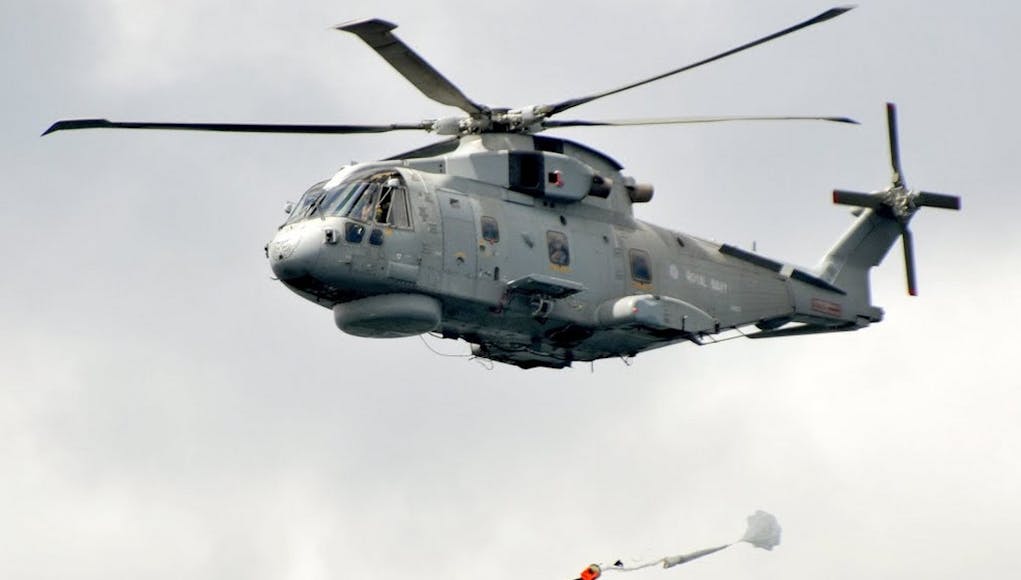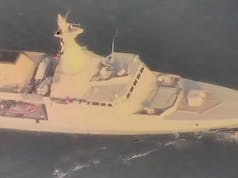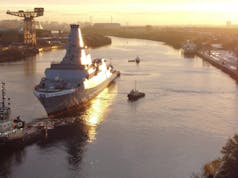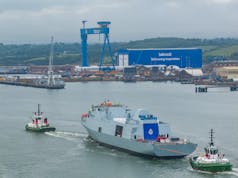Royal Navy helicopter crews have stepped up training ahead of the deployment of HMS Queen Elizabeth and her Carrier Strike Group to the Asia-Pacific.
The Royal Navy say in a news release that aircrew from 820 Naval Air Squadron made the short flight from their base at Culdrose to the nearby bay to launch dummy versions of Sting Ray, the RN’s mainstay lightweight torpedo for the past three decades and more.
“It’s carried by Merlins and Wildcats, plus Type 23 frigates such as HMS Kent and Richmond… not just to arm their helicopters, but also to launch from tubes built into the superstructure. As the principal submarine hunter, Merlin carriers depth charges or four Sting Rays – although the latter will be replaced by a new 21st-Century lightweight torpedo announced in the recent Defence Review.”
820 Naval Air Sqaudron – seven Merlin Mk2s plus 200 air and ground crew – will shortly deploy with HMS Queen Elizabeth, first on a short exercise off Scotland to hone combined skills (Exercise Strike Warrior) before the entire group of warships, auxiliaries and air power heads to the Asia-Pacific region for the remainder of 2021.
The Royal Navy say that it is the task of 820 to shield the group not just from submarines but also threats on the water and, with the advent of the new Crowsnest variant, to provide long-range airborne early warning for the group… and direct F-35 Lightnings on to target.
You can read more on this from the Royal Navy by clicking here.














So background info.
They dropped a TVT= Training Variant Torpedo. It’s just a weighted torpedo shape for handling, loading and drop practise. Before you do drop it you need to take the lead weights out of the nose or it won’t float back to the surface.
It’s Fitted to the aircraft with a reusable single band suspension unit. It has a gas generator that forces the carriage bands apart releasing the torpedo. The band comes back with the aircraft and is serviced cleaned and then reused.
The parachute doesn’t slow or retard the torpedo. It stabilises the torpedo for the correct angle of water entry and acts as a drogue, stopping the torpedo plunging deep. On a warshhot weapon the motor would spin up, the drogue has an opposite thread attachment sleeve that unscrews and is left in the water. On a TVT it stays attached. For torpedoes launched by MTLS tube they also have a drogue to again stop plunging.
There is also a Safety Arming unit pull wire at the nose to arm it, a frangable nose cap that prevents damage and icing to the Sonar transducers in flight and it smashes off on water entry and a plug in/pull out data cable at the back for programming it with search pattern options.
All of the above attachments are collectively known as FIAM… Flight In Air Material. It can be fitted to a torpedo in times of tension and left fitted whilst the torpedo is in the magazine stowage racks. It means that when needed a torpedo is ready to load on an aircraft at very short notice and without the time consuming need to prep the weapon for flight. Usually from a bare weapon in a rack, removing it, prepping it and then delivery to the flight for loading takes 40mins. A good prep team can do 2 in around 20 – 30 mins.. If its already prepped it takes less than 5 mins to get it to the flight.
To get a TVT back you can either use a boat or drop a diver in attach a sling and carry it ashore as an underslung load.
I do like a good bit of insider info, Ta!
Excellent insight as usual.
Thank you.
Things like this are why I still read comments. Really informative. Cheers 👍.
As always Gunbuster-better than Wikipedia!
Thanks, really interesting background information.
A little bit more on the subject can be found here.
https://www.navyrecognition.com/index.php/news/defence-news/year-2015-news/july-2015-navy-naval-forces-defense-industry-technology-maritime-security-global-news/2904-royal-navy-aw159-wildcat-maritime-helicopter-test-fired-sting-ray-torpedo-for-the-1st-time.html
The one dropped by the Wildcat in the picture has Type H Suspension bands fitted. These are the bands used for decades for the Mk44, Mk46 and Mk 75 Sting Ray carriage on Wasp, Lynx, Seaking and Merlin until replaced by the single suspension band unit described above. There are 2 of these Type H bands on the torpedo. When released the arming wires pull a pin out from a short delay clockwork timer. It operates and then releases the H band from the weapon. The bands are thrown clear by bloody great bungee cords which are fitted(With difficulty if you dont have the Knack for putting them on!) onto the bands and they splash into the sea never to be seen again.
All the other FIAM is exactly the same as fitted for Merlin but the arming wires may differ slightly in length between aircraft strong points.
Type B nose cap,
ATQ parachute
SAU arming wire
Umbilical Cable
Many thanks for the information.
Do you happen to know anything about the new version of Stingray and when it will enter service?
What colour eyes does the pilot have though? 😂
Cannot see…the pilot has the visor down. 🙂